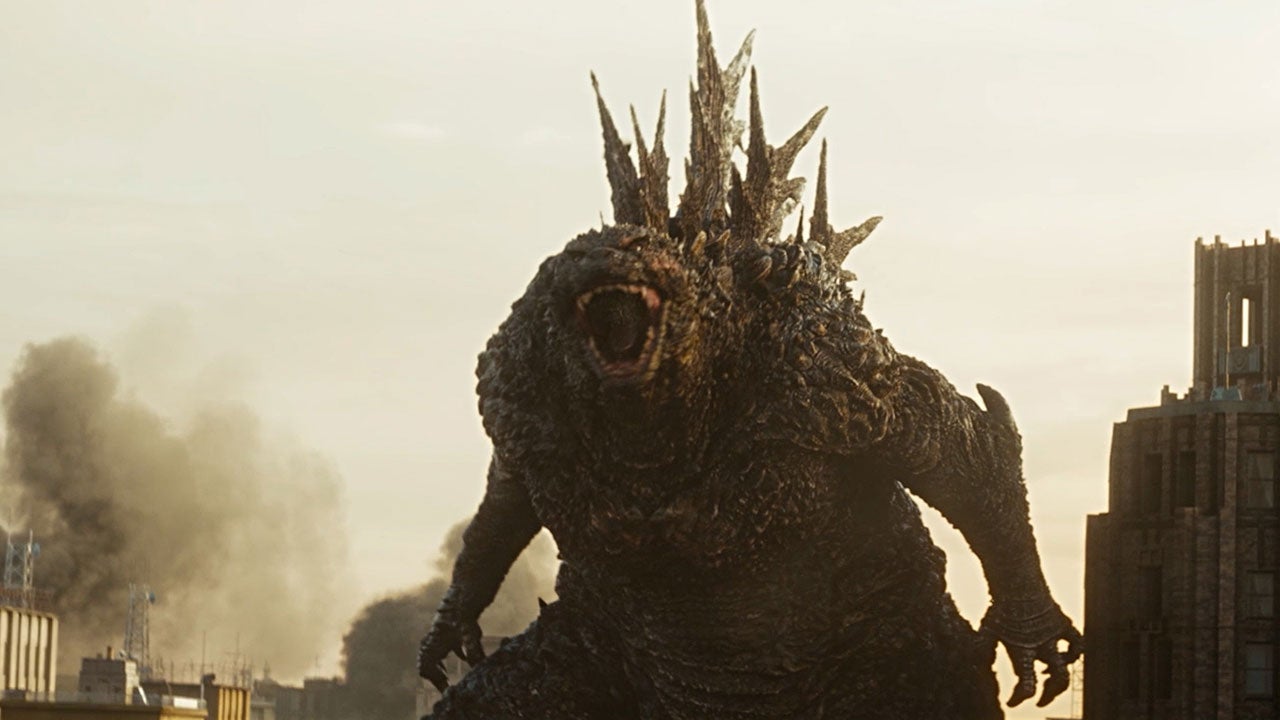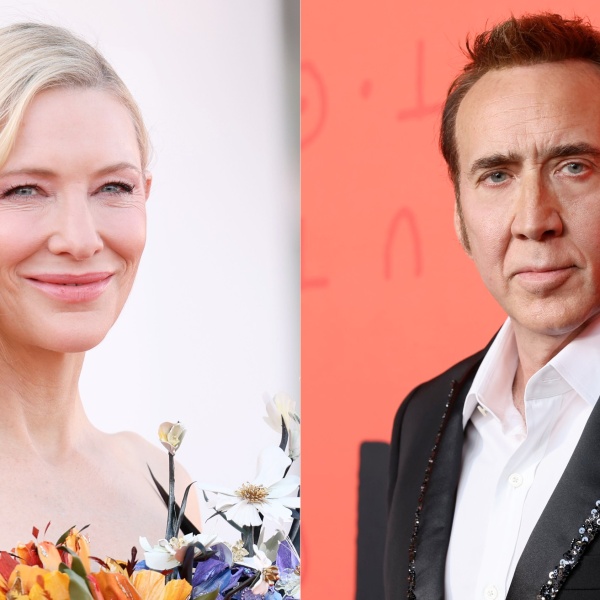For his tiny, frantically fleeing costars, Godzilla’s a tough scene partner: ungiving improviser, often plays to the camera, goes annoyingly Method on every shoot. But mostly, he’s difficult to share a screen with in a literal, visual capacity, his sheer size either overtaking the frame when glimpsed from mortal vantage or rendering people as puny ants from his.
Every entry in the sprawling, oft-rebooted franchise has wrestled with the question of scale as it finds its place on a spectrum between “human story plagued by giant lizard” or “giant lizard story nagged by humans,” a balance easily miscalculated. The twenty-story-tall poster boy’s recent exploits in Hollywood have managed to have it neither way instead of both, overdosing on lore while dawdling with characters who cannot hope to be as interesting as their reptilian upstager.
Gareth Edwards was onto something with his 2014 take, which abstracted our species as a collective concept, an insignificant plank in the way of a flattening force of nature shaken loose when the bombs detonated at Hiroshima and Nagasaki. Born of atomic age anxiety, Godzilla has always been a creature of ideas, his stature so grand as to be historical more than melodramatic.
Of course the big guy’s home studio of Toho understands this better than anybody, as evident in 2016’s reinvigorating “Shin Godzilla,” in which bureaucratic red tape held up the defensive countermeasures as a comment on the mismanaged Fukushima meltdown of 2011. With estimable brawn and brain, its follow-up “Godzilla Minus One” returns to the primal scene of nuclear devastation to ponder the value of an individual life in the face of mass death, and finds a handful worth fighting for.
In judging the nobility of self-sacrifice against the ambiguous morality of kamikaze warfare — posed as an injustice not to its targets, but rather to the Japanese soldiers spent like bullet casings by an indifferent state — writer/director Takashi Yamazaki does more than find a renewed purpose for an IP asset impervious to irrelevance. He’s reconciled the series’ pop thrills with the heaviness of its political subtext more skillfully than anyone since the rubber-suit days by melding the two into an ideological spectacle to rival Sergei Eisenstein’s, both in its foregrounded populist leanings as well its rousing, cathartic montage in action.
Godzilla celebrates the big 7-0 this year, but you wouldn’t guess it. He’s as vital as ever.
He looks good for his age, and we can tell because most of the key scenes takes place in broad daylight, a much-appreciated rejoinder to the plague of nocturnal smudginess de rigeur in America’s comparatively mortifying excuses for blockbusters. His skin texture is noticeably craggier in keeping with his briny monster-of-the-deep genesis, at this point known well enough that the film can afford to instead track the origins of one Kōichi Shikishima (Ryunosuke Kamiki).
In the last gasps of World War II, the would-be suicide bomber gets cold feet and fakes engine trouble, only for the maintenance stopover to suffer a Godzilla attack he can’t bring himself to stop. His lingering survivor’s guilt dovetails with the last-ditch effort of a citizen band doing what the government won’t to curtail the laser-breath-shooting menace, led by a more likable version of the indistinct scientist (Hidetaka Yoshioka) obligatory in these films. On top of their formidable foe, they face underfunding and a lack of international assistance due to U.S.-Soviet tensions, left to live or not by the same military that sends its expendable human resources to dispose of unexploded mines.
Shikishima’s minimization and objectification at the hands of Japan itself can only be combatted by the love of his not-quite-wife (Minami Hamabe) and the infant they take in after she’s orphaned in the air raids. A certain sluggishness sets in during the domestic passages they share, though it’s invariably dispelled in short order by one of the many clashes photographed with a Wagnerian thunderousness: a “Jaws” riff on the high seas, an aerial dogfight giving Pete “Maverick” Mitchell a run for his money, the obliteration of Tokyo complete with musical theme and citizens scrambling not to get crushed underfoot.
With commendable spatial consistency and crisp CGI, these shows of force strike the right note of terrible awe, deepened by Yamazaki’s emphasis on how much is at stake. Shikishima matters, not because he’s so special but specifically because he isn’t, just one cell in the larger population that constitutes the true protagonist.
The film threads the needle of epic intimacy by identifying a personal element too expansive to be trivial, a battle we all take up together in solidarity. Next to the toenail of Godzilla, any single person becomes an anonymous blip of an organism; as one, the human species can start to contend with the cultural enormity of a behemoth the size of centuries, not skyscrapers.
Grade: B+
“Godzilla Minus One” is now playing in theaters.





